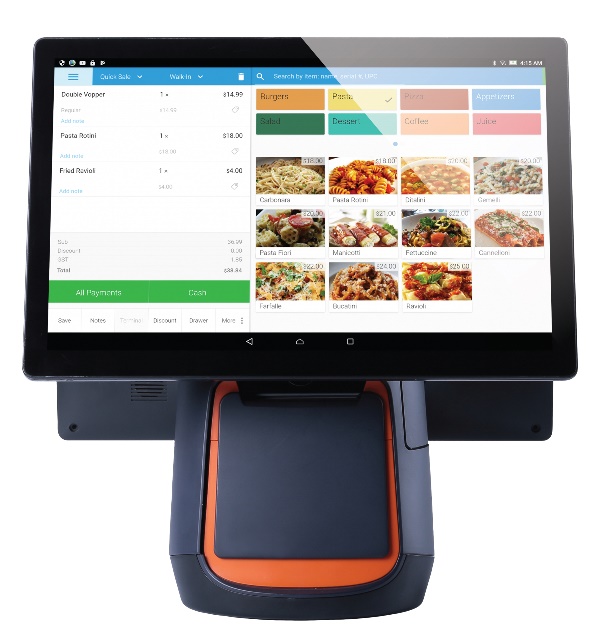Just How POS System Functions: A Comprehensive Overview for Service Owners

Comprehending the Elements of a POS System

How Sales Purchases Are Processed
When a customer chooses to purchase, the sales purchase starts a series of organized steps within the POS system. The cashier inputs the items being acquired, which are scanned with a barcode visitor or by hand entered. This activity fetches product information, including rates and appropriate taxes, from the system's database.Next, the consumer is provided with the complete amount due. The POS system then processes the settlement, whether via money, credit card, or mobile settlement methods (Restaurant POS Software). For electronic payments, the POS securely connects with payment processors to license and verify the transaction.Once the repayment is confirmed, the system creates a receipt, which can be published or sent out digitally. This invoice acts as proof of acquisition for the client. The transaction information is recorded in the system, ensuring exact sales documents and economic tracking for the company.
Inventory Administration and Monitoring

Effective inventory monitoring and monitoring are essential elements of a POS system, as they guarantee that organizations preserve ideal supply degrees and reduce discrepancies. A robust POS system enables real-time stock updates, mirroring returns and sales instantly. This makes it possible for company proprietors to keep track of supply levels accurately, making sure that popular items are conveniently offered while protecting against overstocking of much less prominent products.Additionally, advanced POS systems use attributes such as automatic supply notifies and reorder recommendations, improving the purchase process. Barcoding and RFID modern technology improve precision in tracking inventory activity, lowering human mistake. Substantial coverage tools give understandings into supply turn over prices, helping organizations make educated decisions about acquiring and product offerings. Inevitably, efficient stock administration with a POS system not just boosts functional efficiency however also enhances customer fulfillment by making sure item accessibility.
Evaluating Client Data and Insights
Customer data analysis acts as a powerful device for businesses using a POS system (Restaurant POS Software). By collecting and examining deal data, businesses can reveal useful understandings concerning consumer habits and preferences. This analysis enables them to identify acquiring patterns, peak purchasing times, and preferred products, therefore educating stock decisions and advertising strategies.Additionally, organizations can section their client base, permitting individualized marketing initiatives that accommodate specific demographics or acquiring habits. Recognizing client commitment patterns additionally helps in creating targeted incentives and promotions programs.The data obtained from a POS system can also expose insights right into customer responses, enabling businesses to make enlightened decisions regarding item offerings and solution improvements. Eventually, leveraging customer information successfully can boost the overall buying experience, foster customer fulfillment, and drive revenue Restaurant POS Software growth
Benefits of Applying a POS System
Frequently Asked Questions
What Kinds Of Companies Can Gain From a POS System?
Numerous businesses gain from a POS system, consisting of retailers, restaurants, hair salons, and shopping platforms. These systems improve deals, inventory management, and consumer data, boosting operational efficiency and improving consumer experience throughout varied industries.
How Much Does a POS System Usually Cost?
The expense of a POS system usually ranges from a few hundred to several thousand bucks, depending upon functions, hardware, and software program. Services should consider continuous charges for purchase, assistance, and maintenance handling when budgeting.
Can I Incorporate a POS System With Existing Software Application?
Incorporating a POS system with existing software program is typically possible. Many systems supply APIs or built-in compatibility features, permitting services to simplify operations and improve capability by connecting different software program applications effectively.
What Training Is Required for Staff to Use a POS System?
Training for team to utilize a POS system generally includes understanding software performances, refining transactions, taking care of stock, and dealing with consumer interactions. Practical presentations and hands-on session improve efficiency and self-confidence being used the system properly.
What Occurs if the Net Decreases While Utilizing a POS System?
Deals may be interrupted if the internet goes down during POS system usage. Many systems provide offline abilities, enabling basic operations to continue, but complete capability, consisting of real-time inventory updates, will be limited. A Factor of Sale (POS) system website is composed of numerous key elements that work with each other to facilitate deals and take care of company operations. Efficient supply monitoring and monitoring are essential components of a POS system, as they ensure that businesses maintain excellent supply levels and lessen disparities. Client here data evaluation offers as an effective device for organizations using a POS system. Recognizing client commitment patterns likewise assists in developing targeted promos and incentives programs.The information gleaned from a POS system can likewise expose insights right into client responses, making it possible for businesses to make educated decisions concerning product offerings and solution enhancements. Applying a POS system offers countless advantages that can greatly improve business procedures.